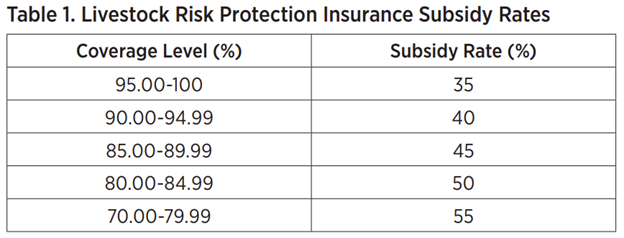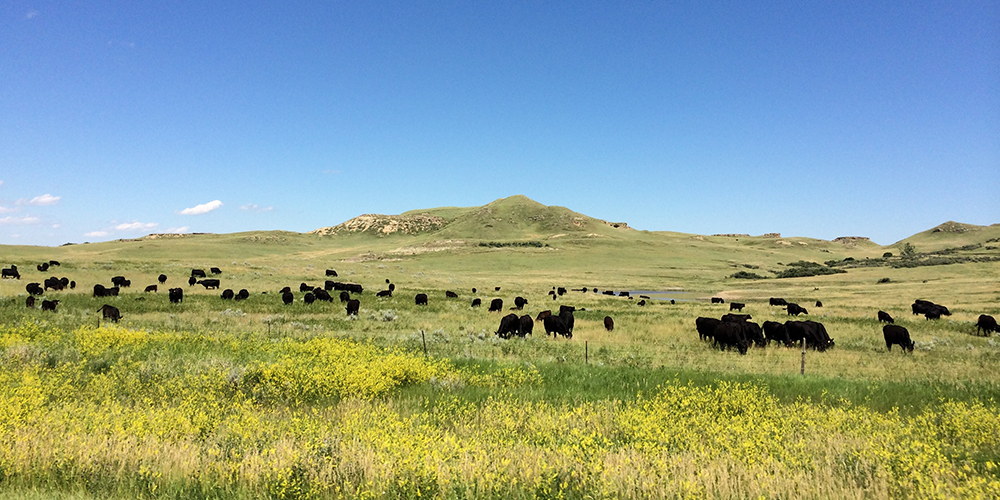Proactive Protection: Bagley Risk Management Techniques
Comprehending Livestock Threat Security (LRP) Insurance Coverage: A Comprehensive Guide
Browsing the world of animals threat protection (LRP) insurance coverage can be an intricate undertaking for many in the agricultural market. From just how LRP insurance functions to the different insurance coverage alternatives available, there is much to uncover in this detailed guide that can potentially form the means animals manufacturers come close to threat management in their companies.

Exactly How LRP Insurance Coverage Works
Sometimes, understanding the technicians of Livestock Threat Defense (LRP) insurance policy can be complicated, however breaking down just how it works can give clearness for farmers and ranchers. LRP insurance coverage is a risk monitoring device designed to secure livestock manufacturers against unforeseen rate declines. The plan allows manufacturers to establish a protection degree based on their details requirements, picking the number of head, weight array, and protection rate. When the policy remains in place, if market value fall listed below the protection cost, producers can sue for the distinction. It is necessary to note that LRP insurance is not an income guarantee; instead, it concentrates exclusively on price threat protection. The protection duration commonly ranges from 13 to 52 weeks, giving versatility for manufacturers to choose a period that straightens with their manufacturing cycle. By utilizing LRP insurance, farmers and ranchers can alleviate the economic risks connected with rising and fall market value, ensuring better security in their operations.
Qualification and Coverage Options

When it comes to insurance coverage choices, LRP insurance policy supplies manufacturers the versatility to select the protection level, coverage period, and endorsements that ideal match their risk management needs. By comprehending the qualification requirements and coverage choices offered, animals producers can make informed decisions to manage threat successfully.
Pros and Disadvantages of LRP Insurance Coverage
When assessing Livestock Danger Protection (LRP) insurance policy, it is essential for animals producers to consider the disadvantages and benefits fundamental in this risk monitoring tool.

One of the key benefits of LRP insurance is its capability to offer security against a decline in animals rates. Additionally, LRP insurance coverage provides a level of versatility, enabling producers to personalize protection levels and policy durations to fit their particular demands.
Nonetheless, there are likewise some drawbacks to think about. One limitation of LRP insurance is that it does not shield versus all kinds of dangers, such as condition break outs or all-natural catastrophes. Premiums can occasionally be costly, particularly for producers with big livestock herds. It is crucial for producers to thoroughly examine their specific risk direct exposure and economic scenario to figure out if LRP insurance coverage is the best risk monitoring tool for their procedure.
Comprehending LRP Insurance Coverage Premiums

Tips for Maximizing LRP Benefits
Taking full advantage of the benefits of Animals Threat Defense (LRP) insurance coverage needs critical planning and proactive danger monitoring - Bagley Risk Management. To take advantage of your LRP protection, take into consideration the following tips:
Regularly Assess Market Conditions: Stay notified concerning market patterns and rate changes in the livestock market. By keeping track of these variables, you can make educated choices about when to buy LRP protection to protect against possible losses.
Establish Realistic Protection Levels: When picking insurance coverage degrees, consider your manufacturing prices, market value of animals, and possible dangers - Bagley Risk Management. Setting reasonable coverage degrees ensures that you are effectively secured without overpaying for unnecessary insurance
Diversify Your Coverage: Rather than counting entirely on LRP insurance coverage, take into consideration expanding your threat monitoring techniques. Integrating LRP with various other threat administration tools such as futures agreements or options can supply extensive protection against market unpredictabilities.
Evaluation and Change Insurance Coverage Frequently: As market conditions transform, regularly evaluate your LRP coverage to guarantee it lines up with your current threat direct exposure. Adjusting insurance coverage levels and timing of acquisitions can aid maximize your threat defense method. try this out By complying with these pointers, you can make the most of the advantages of LRP insurance and secure your livestock operation versus unexpected threats.
Conclusion
Finally, livestock danger defense (LRP) insurance is a beneficial tool for farmers to handle the financial dangers linked with their livestock operations. By recognizing how LRP works, qualification and insurance coverage options, as well as the advantages and disadvantages of this insurance policy, farmers can make informed decisions to safeguard their source of incomes. By carefully thinking about LRP costs and implementing approaches to optimize benefits, farmers can minimize prospective losses and make certain the sustainability of their procedures.
Livestock manufacturers interested in getting Animals Danger Defense (LRP) insurance policy can explore a range of eligibility criteria and insurance coverage choices customized to their certain animals procedures.When it comes to coverage choices, LRP insurance coverage provides producers the flexibility to choose the why not find out more coverage degree, insurance coverage period, and endorsements that best suit their threat monitoring requirements.To understand the complexities of Livestock Threat Defense (LRP) insurance coverage completely, comprehending the elements influencing LRP insurance premiums is crucial. LRP insurance policy costs are figured out by numerous components, consisting of the insurance coverage level selected, the expected cost of livestock at the end of the insurance coverage duration, the kind of livestock being insured, and the size of the protection period.Testimonial and Change Insurance Coverage Regularly: As market problems alter, periodically assess your LRP protection to guarantee it lines up with your current threat exposure.